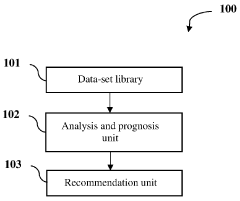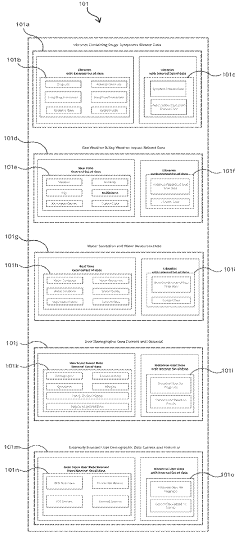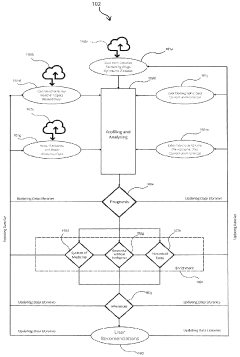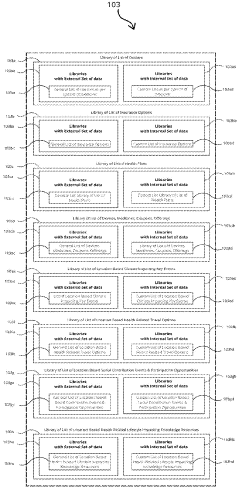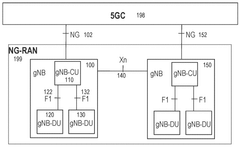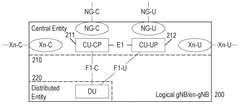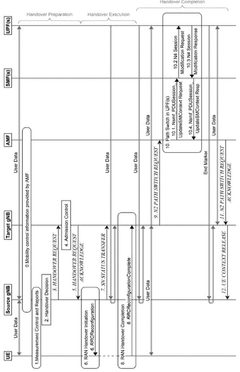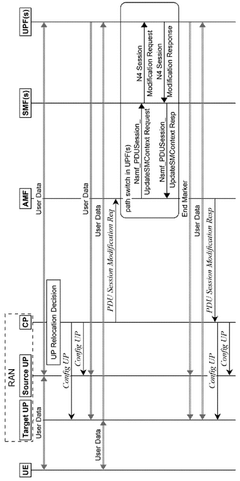The Impact of 5G UC on Enhancing Global Climate Change Research
JUL 18, 20259 MIN READ
Generate Your Research Report Instantly with AI Agent
Patsnap Eureka helps you evaluate technical feasibility & market potential.
5G UC and Climate Research: Background and Objectives
The convergence of 5G Ultra-Capacity (UC) technology and climate change research represents a significant leap forward in our ability to understand and address global environmental challenges. As the world grapples with the increasing impacts of climate change, the need for more accurate, real-time data collection and analysis has become paramount. 5G UC, with its enhanced capabilities, offers a promising solution to meet these demands.
The evolution of mobile network technologies has led to the development of 5G UC, which provides unprecedented speed, capacity, and low latency. This advanced network infrastructure enables the deployment of a vast array of sensors and devices capable of collecting and transmitting environmental data at an unprecedented scale and frequency. The integration of 5G UC into climate research aims to revolutionize how we monitor, analyze, and respond to climate-related phenomena.
The primary objective of leveraging 5G UC in climate change research is to create a more comprehensive and responsive global climate monitoring system. This system would enable scientists and policymakers to access real-time data from remote and previously inaccessible locations, providing a more accurate picture of global climate patterns and their changes over time. The enhanced connectivity offered by 5G UC allows for the seamless integration of diverse data sources, including ground-based sensors, satellite imagery, and atmospheric measurements.
Another key goal is to improve the precision and timeliness of climate models and predictions. By harnessing the power of 5G UC to process and analyze vast amounts of data quickly, researchers can develop more sophisticated climate models that account for a wider range of variables and interactions. This enhanced modeling capability could lead to more accurate predictions of extreme weather events, long-term climate trends, and the potential impacts of various mitigation strategies.
Furthermore, the implementation of 5G UC in climate research aims to facilitate better collaboration among scientists, institutions, and nations. The high-speed, low-latency nature of 5G UC enables real-time data sharing and remote collaboration, breaking down geographical barriers and fostering a more unified global approach to climate change research. This improved connectivity can accelerate the pace of scientific discovery and the development of innovative solutions to address climate challenges.
As we explore the potential of 5G UC in climate change research, it is essential to consider the broader technological landscape and the ongoing advancements in related fields such as artificial intelligence, machine learning, and big data analytics. The synergy between these technologies and 5G UC has the potential to create powerful new tools for climate scientists, enabling more sophisticated analysis and interpretation of complex environmental data.
The evolution of mobile network technologies has led to the development of 5G UC, which provides unprecedented speed, capacity, and low latency. This advanced network infrastructure enables the deployment of a vast array of sensors and devices capable of collecting and transmitting environmental data at an unprecedented scale and frequency. The integration of 5G UC into climate research aims to revolutionize how we monitor, analyze, and respond to climate-related phenomena.
The primary objective of leveraging 5G UC in climate change research is to create a more comprehensive and responsive global climate monitoring system. This system would enable scientists and policymakers to access real-time data from remote and previously inaccessible locations, providing a more accurate picture of global climate patterns and their changes over time. The enhanced connectivity offered by 5G UC allows for the seamless integration of diverse data sources, including ground-based sensors, satellite imagery, and atmospheric measurements.
Another key goal is to improve the precision and timeliness of climate models and predictions. By harnessing the power of 5G UC to process and analyze vast amounts of data quickly, researchers can develop more sophisticated climate models that account for a wider range of variables and interactions. This enhanced modeling capability could lead to more accurate predictions of extreme weather events, long-term climate trends, and the potential impacts of various mitigation strategies.
Furthermore, the implementation of 5G UC in climate research aims to facilitate better collaboration among scientists, institutions, and nations. The high-speed, low-latency nature of 5G UC enables real-time data sharing and remote collaboration, breaking down geographical barriers and fostering a more unified global approach to climate change research. This improved connectivity can accelerate the pace of scientific discovery and the development of innovative solutions to address climate challenges.
As we explore the potential of 5G UC in climate change research, it is essential to consider the broader technological landscape and the ongoing advancements in related fields such as artificial intelligence, machine learning, and big data analytics. The synergy between these technologies and 5G UC has the potential to create powerful new tools for climate scientists, enabling more sophisticated analysis and interpretation of complex environmental data.
Market Demand for 5G UC in Environmental Monitoring
The market demand for 5G UC (Ultra-Capacity) in environmental monitoring is experiencing significant growth, driven by the increasing need for real-time, high-resolution data collection and analysis in climate change research. As global efforts to combat climate change intensify, there is a growing recognition of the critical role that advanced telecommunications technologies can play in enhancing our understanding of environmental processes and facilitating more effective mitigation strategies.
The environmental monitoring sector is witnessing a surge in demand for 5G UC-enabled devices and systems. These technologies offer unprecedented capabilities in data transmission speed, reliability, and capacity, which are essential for capturing and analyzing complex environmental phenomena. Climate scientists and researchers are particularly interested in leveraging 5G UC to deploy vast networks of interconnected sensors and IoT devices across diverse ecosystems, enabling continuous, high-fidelity monitoring of key environmental parameters.
One of the primary drivers of market demand is the need for improved climate modeling and prediction. 5G UC's low latency and high bandwidth capabilities allow for the rapid transmission of large volumes of data from remote sensing platforms, including satellites, drones, and ground-based stations. This real-time data flow enhances the accuracy and timeliness of climate models, enabling more precise forecasting of extreme weather events and long-term climate trends.
The agricultural sector is another significant contributor to the growing demand for 5G UC in environmental monitoring. Precision agriculture techniques rely heavily on real-time data from soil sensors, weather stations, and crop monitoring systems. 5G UC networks facilitate the seamless integration of these data sources, enabling farmers to optimize resource usage, reduce environmental impact, and adapt to changing climate conditions more effectively.
Urban environments are also driving demand for 5G UC-enabled environmental monitoring solutions. Smart cities are increasingly deploying sensor networks to monitor air quality, noise pollution, and urban heat islands. The high-capacity and low-latency characteristics of 5G UC are crucial for managing the massive data streams generated by these dense sensor networks, allowing city planners and environmental agencies to implement data-driven policies for improving urban sustainability and resilience to climate change.
The market for 5G UC in environmental monitoring is further bolstered by the growing emphasis on corporate sustainability and environmental, social, and governance (ESG) reporting. Companies across various industries are investing in advanced monitoring technologies to track their environmental impact and demonstrate compliance with increasingly stringent regulations. 5G UC-enabled systems provide the necessary infrastructure for comprehensive, real-time environmental performance monitoring, supporting corporate sustainability initiatives and enhancing stakeholder trust.
As the effects of climate change become more pronounced, there is an escalating demand for 5G UC solutions in disaster prediction and response. Emergency management agencies and humanitarian organizations are leveraging the technology to enhance early warning systems for natural disasters such as floods, wildfires, and hurricanes. The ability to rapidly deploy 5G UC networks in affected areas also supports more efficient disaster response and recovery efforts, further driving market growth in this sector.
The environmental monitoring sector is witnessing a surge in demand for 5G UC-enabled devices and systems. These technologies offer unprecedented capabilities in data transmission speed, reliability, and capacity, which are essential for capturing and analyzing complex environmental phenomena. Climate scientists and researchers are particularly interested in leveraging 5G UC to deploy vast networks of interconnected sensors and IoT devices across diverse ecosystems, enabling continuous, high-fidelity monitoring of key environmental parameters.
One of the primary drivers of market demand is the need for improved climate modeling and prediction. 5G UC's low latency and high bandwidth capabilities allow for the rapid transmission of large volumes of data from remote sensing platforms, including satellites, drones, and ground-based stations. This real-time data flow enhances the accuracy and timeliness of climate models, enabling more precise forecasting of extreme weather events and long-term climate trends.
The agricultural sector is another significant contributor to the growing demand for 5G UC in environmental monitoring. Precision agriculture techniques rely heavily on real-time data from soil sensors, weather stations, and crop monitoring systems. 5G UC networks facilitate the seamless integration of these data sources, enabling farmers to optimize resource usage, reduce environmental impact, and adapt to changing climate conditions more effectively.
Urban environments are also driving demand for 5G UC-enabled environmental monitoring solutions. Smart cities are increasingly deploying sensor networks to monitor air quality, noise pollution, and urban heat islands. The high-capacity and low-latency characteristics of 5G UC are crucial for managing the massive data streams generated by these dense sensor networks, allowing city planners and environmental agencies to implement data-driven policies for improving urban sustainability and resilience to climate change.
The market for 5G UC in environmental monitoring is further bolstered by the growing emphasis on corporate sustainability and environmental, social, and governance (ESG) reporting. Companies across various industries are investing in advanced monitoring technologies to track their environmental impact and demonstrate compliance with increasingly stringent regulations. 5G UC-enabled systems provide the necessary infrastructure for comprehensive, real-time environmental performance monitoring, supporting corporate sustainability initiatives and enhancing stakeholder trust.
As the effects of climate change become more pronounced, there is an escalating demand for 5G UC solutions in disaster prediction and response. Emergency management agencies and humanitarian organizations are leveraging the technology to enhance early warning systems for natural disasters such as floods, wildfires, and hurricanes. The ability to rapidly deploy 5G UC networks in affected areas also supports more efficient disaster response and recovery efforts, further driving market growth in this sector.
Current State and Challenges of 5G UC in Climate Studies
The integration of 5G Ultra-Capacity (UC) technology into climate change research has made significant strides in recent years, revolutionizing data collection, analysis, and communication in this critical field. However, the current state of 5G UC implementation in climate studies faces several challenges that need to be addressed for its full potential to be realized.
One of the primary advantages of 5G UC in climate research is its ability to facilitate real-time data transmission from remote sensors and monitoring stations. This capability has greatly enhanced the accuracy and timeliness of climate data collection, allowing researchers to track environmental changes with unprecedented precision. The high-speed, low-latency nature of 5G UC networks enables the rapid transfer of large volumes of data, supporting more comprehensive and detailed climate models.
Despite these advancements, the deployment of 5G UC infrastructure in remote and environmentally sensitive areas remains a significant challenge. Many critical climate monitoring locations are situated in harsh, inaccessible terrains where installing and maintaining 5G equipment is both technically difficult and potentially disruptive to the local ecosystem. This limitation has resulted in uneven coverage, potentially creating blind spots in global climate data collection efforts.
Another current challenge is the energy consumption of 5G UC networks. While 5G technology is more energy-efficient per unit of data transferred compared to previous generations, the sheer volume of data being transmitted in climate research applications can lead to substantial power requirements. This raises concerns about the carbon footprint of the very technology being used to study climate change, necessitating careful consideration of sustainable power solutions for 5G UC installations in climate research contexts.
Data security and privacy issues also present ongoing challenges in the application of 5G UC to climate studies. The increased connectivity and data flow enabled by 5G networks create potential vulnerabilities that could be exploited by malicious actors. Ensuring the integrity and confidentiality of climate data transmitted over 5G UC networks is crucial, particularly given the sensitive nature of some climate research and its potential economic and political implications.
Furthermore, the integration of 5G UC technology with existing climate research infrastructure and methodologies poses technical and operational challenges. Legacy systems and data formats may not be immediately compatible with 5G-enabled devices and platforms, requiring significant investment in upgrades and standardization efforts across the global climate research community.
Lastly, the cost associated with implementing and maintaining 5G UC networks for climate research remains a substantial barrier, particularly for developing nations and underfunded research institutions. This economic challenge threatens to exacerbate existing disparities in climate research capabilities between different regions and organizations, potentially skewing global climate data and analysis.
One of the primary advantages of 5G UC in climate research is its ability to facilitate real-time data transmission from remote sensors and monitoring stations. This capability has greatly enhanced the accuracy and timeliness of climate data collection, allowing researchers to track environmental changes with unprecedented precision. The high-speed, low-latency nature of 5G UC networks enables the rapid transfer of large volumes of data, supporting more comprehensive and detailed climate models.
Despite these advancements, the deployment of 5G UC infrastructure in remote and environmentally sensitive areas remains a significant challenge. Many critical climate monitoring locations are situated in harsh, inaccessible terrains where installing and maintaining 5G equipment is both technically difficult and potentially disruptive to the local ecosystem. This limitation has resulted in uneven coverage, potentially creating blind spots in global climate data collection efforts.
Another current challenge is the energy consumption of 5G UC networks. While 5G technology is more energy-efficient per unit of data transferred compared to previous generations, the sheer volume of data being transmitted in climate research applications can lead to substantial power requirements. This raises concerns about the carbon footprint of the very technology being used to study climate change, necessitating careful consideration of sustainable power solutions for 5G UC installations in climate research contexts.
Data security and privacy issues also present ongoing challenges in the application of 5G UC to climate studies. The increased connectivity and data flow enabled by 5G networks create potential vulnerabilities that could be exploited by malicious actors. Ensuring the integrity and confidentiality of climate data transmitted over 5G UC networks is crucial, particularly given the sensitive nature of some climate research and its potential economic and political implications.
Furthermore, the integration of 5G UC technology with existing climate research infrastructure and methodologies poses technical and operational challenges. Legacy systems and data formats may not be immediately compatible with 5G-enabled devices and platforms, requiring significant investment in upgrades and standardization efforts across the global climate research community.
Lastly, the cost associated with implementing and maintaining 5G UC networks for climate research remains a substantial barrier, particularly for developing nations and underfunded research institutions. This economic challenge threatens to exacerbate existing disparities in climate research capabilities between different regions and organizations, potentially skewing global climate data and analysis.
Existing 5G UC Solutions for Climate Data Collection
01 Enhanced network capacity and performance
5G Ultra-Capacity (UC) technology focuses on improving network capacity and performance through advanced techniques such as carrier aggregation, massive MIMO, and beamforming. These enhancements allow for higher data rates, lower latency, and increased network efficiency, enabling a wide range of applications and services.- Enhanced network capacity and performance: 5G Ultra-Capacity (UC) technology focuses on improving network capacity and performance through advanced techniques such as carrier aggregation, massive MIMO, and beamforming. These enhancements allow for higher data rates, lower latency, and increased network efficiency, enabling a wide range of applications and services.
- Spectrum utilization and management: 5G UC enhancing involves efficient spectrum utilization and management techniques. This includes dynamic spectrum sharing, flexible spectrum allocation, and advanced spectrum refarming strategies to maximize the use of available frequency bands and improve overall network capacity.
- Network slicing and virtualization: 5G UC technology leverages network slicing and virtualization to create multiple logical networks on a single physical infrastructure. This enables customized network services for different use cases and applications, optimizing resource allocation and enhancing overall network performance.
- Edge computing integration: Integrating edge computing capabilities with 5G UC enhances network performance by bringing computing resources closer to the end-users. This reduces latency, improves data processing efficiency, and enables real-time applications such as augmented reality, autonomous vehicles, and industrial IoT.
- AI-driven network optimization: Artificial intelligence and machine learning techniques are employed to optimize 5G UC network performance. These technologies enable predictive maintenance, intelligent resource allocation, and adaptive network configuration, leading to improved network reliability, efficiency, and user experience.
02 Spectrum utilization and management
5G UC enhancing involves efficient spectrum utilization and management techniques. This includes dynamic spectrum sharing, flexible spectrum allocation, and advanced frequency reuse strategies to maximize the use of available spectrum resources and improve overall network capacity.Expand Specific Solutions03 Network slicing and virtualization
5G UC technology leverages network slicing and virtualization to create multiple logical networks on a single physical infrastructure. This enables tailored services for different use cases and applications, optimizing resource allocation and enhancing overall network performance.Expand Specific Solutions04 Edge computing integration
Integrating edge computing capabilities with 5G UC enhances network performance by bringing computing resources closer to the end-users. This reduces latency, improves data processing efficiency, and enables new applications that require real-time responsiveness.Expand Specific Solutions05 Advanced antenna technologies
5G UC enhancing incorporates advanced antenna technologies such as massive MIMO, beamforming, and adaptive antenna systems. These technologies improve signal quality, increase coverage, and enhance spectral efficiency, contributing to overall network performance improvements.Expand Specific Solutions
Key Players in 5G UC and Climate Change Research
The 5G UC technology landscape is characterized by intense competition among major players in the telecommunications and technology sectors. The market is in a growth phase, with significant investments being made in infrastructure development and research. Key companies like Nokia, ZTE, Samsung, and Ericsson are at the forefront, leveraging their expertise in network equipment and solutions. The technology's maturity is rapidly advancing, with firms like MediaTek and Qualcomm driving innovation in chipset development. Research institutions such as Southeast University and Industrial Technology Research Institute are contributing to the technological advancements, while global tech giants like IBM and Google are exploring 5G UC applications in climate change research, indicating a growing intersection between 5G technology and environmental science.
Nokia Technologies Oy
Technical Solution: Nokia's 5G UC solution for climate change research focuses on creating a robust and flexible network infrastructure that supports large-scale environmental data collection and analysis. Their approach leverages advanced massive MIMO technology and beamforming to extend 5G coverage to remote areas, crucial for comprehensive climate monitoring[2]. Nokia has developed specialized IoT modules optimized for low-power, long-range communication, enabling the deployment of vast sensor networks in diverse ecosystems. The company's AirScale cloud RAN architecture allows for dynamic resource allocation, ensuring efficient use of network capacity for climate data transmission. Nokia's end-to-end network slicing capability enables the creation of dedicated virtual networks for different aspects of climate research, such as atmospheric monitoring, ocean temperature tracking, and forest cover analysis[4]. Furthermore, Nokia has integrated AI and machine learning algorithms directly into their network infrastructure, enabling real-time data processing and anomaly detection in climate patterns[6].
Strengths: Strong focus on energy-efficient network solutions; Extensive experience in IoT and sensor network technologies. Weaknesses: May face challenges in competing with more established players in the environmental research sector; Potential limitations in direct climate modeling expertise.
ZTE Corp.
Technical Solution: ZTE's 5G UC solution for climate change research focuses on providing high-capacity, low-latency network infrastructure tailored for environmental monitoring and data analysis. Their approach includes the deployment of ultra-dense small cell networks in key research areas, enabling high-resolution data collection from environmental sensors[10]. ZTE has developed specialized 5G modules for climate research applications, featuring extended battery life and robust design for harsh environmental conditions. The company's UniSite solution allows for the integration of multiple radio access technologies, facilitating seamless connectivity between various types of climate monitoring devices. ZTE's 5G UC network incorporates advanced spectrum sharing techniques, maximizing the efficiency of available frequency bands for climate data transmission. Additionally, ZTE has implemented a cloud-native 5G core network architecture that supports network slicing, enabling the creation of dedicated virtual networks for different aspects of climate research, such as atmospheric monitoring, oceanography, and biodiversity studies[11].
Strengths: Strong presence in emerging markets, potentially facilitating climate research in diverse geographical areas; Cost-effective 5G solutions suitable for large-scale deployments. Weaknesses: May face geopolitical challenges in some markets due to security concerns; Less established reputation in environmental research applications compared to some competitors.
Core Innovations in 5G UC for Environmental Sensing
A system to determine the prognosis based on climate change and method thereof
PatentWO2024127163A1
Innovation
- A novel health prognosis system that correlates user inputs, including health parameters and symptoms, with comprehensive datasets using a matching and differencing process, providing real-time analysis and user-centric recommendations through a recommendation unit that offers actionable suggestions and holistic well-being guidance.
Efficient techniques for user-plane path switch
PatentWO2025093905A1
Innovation
- Implementing selective UP path switch signaling methods, where a RAN CP entity determines the need for a path switch and evaluates policy rules to decide between in-band and CP path switch procedures based on conditions such as QoS support, feature compatibility, and latency.
Regulatory Framework for 5G UC in Scientific Research
The regulatory framework for 5G UC in scientific research, particularly in the context of global climate change studies, is a complex and evolving landscape. As 5G UC technology continues to advance and its potential applications in climate research become more apparent, governments and international bodies are working to establish guidelines and regulations to ensure its responsible and effective use.
At the national level, many countries have begun to develop specific regulations for the deployment of 5G networks in scientific research settings. These regulations often focus on spectrum allocation, ensuring that researchers have access to the necessary bandwidth for data-intensive climate studies. Additionally, they address issues of data privacy and security, recognizing the sensitive nature of climate data and the need to protect it from unauthorized access or manipulation.
Internationally, organizations such as the International Telecommunication Union (ITU) are playing a crucial role in harmonizing 5G UC regulations across borders. The ITU has been working on developing global standards for 5G technology, including its use in scientific research. These standards aim to ensure interoperability and facilitate international collaboration in climate change research.
Environmental regulations also play a significant role in shaping the use of 5G UC in climate research. Many countries have implemented strict guidelines on the environmental impact of 5G infrastructure, requiring assessments of energy consumption and potential ecological effects before deployment in sensitive research areas.
Data sharing and open science policies are another critical aspect of the regulatory framework. Governments and research institutions are establishing protocols for the sharing of climate data collected through 5G UC networks, promoting transparency and collaboration while also addressing concerns about intellectual property and national security.
Ethical considerations are also being incorporated into the regulatory framework. This includes guidelines on the use of 5G UC-enabled technologies in climate research, such as autonomous drones or IoT sensors, to ensure they do not unduly interfere with wildlife or ecosystems under study.
As the technology continues to evolve, regulatory bodies are adopting adaptive approaches to keep pace with innovations. This includes provisions for regular reviews and updates to regulations, ensuring they remain relevant and effective in supporting climate change research while addressing emerging challenges and opportunities presented by 5G UC technology.
At the national level, many countries have begun to develop specific regulations for the deployment of 5G networks in scientific research settings. These regulations often focus on spectrum allocation, ensuring that researchers have access to the necessary bandwidth for data-intensive climate studies. Additionally, they address issues of data privacy and security, recognizing the sensitive nature of climate data and the need to protect it from unauthorized access or manipulation.
Internationally, organizations such as the International Telecommunication Union (ITU) are playing a crucial role in harmonizing 5G UC regulations across borders. The ITU has been working on developing global standards for 5G technology, including its use in scientific research. These standards aim to ensure interoperability and facilitate international collaboration in climate change research.
Environmental regulations also play a significant role in shaping the use of 5G UC in climate research. Many countries have implemented strict guidelines on the environmental impact of 5G infrastructure, requiring assessments of energy consumption and potential ecological effects before deployment in sensitive research areas.
Data sharing and open science policies are another critical aspect of the regulatory framework. Governments and research institutions are establishing protocols for the sharing of climate data collected through 5G UC networks, promoting transparency and collaboration while also addressing concerns about intellectual property and national security.
Ethical considerations are also being incorporated into the regulatory framework. This includes guidelines on the use of 5G UC-enabled technologies in climate research, such as autonomous drones or IoT sensors, to ensure they do not unduly interfere with wildlife or ecosystems under study.
As the technology continues to evolve, regulatory bodies are adopting adaptive approaches to keep pace with innovations. This includes provisions for regular reviews and updates to regulations, ensuring they remain relevant and effective in supporting climate change research while addressing emerging challenges and opportunities presented by 5G UC technology.
Environmental Impact of 5G UC Infrastructure
The deployment of 5G UC (Ultra-Capacity) infrastructure for enhancing global climate change research brings both positive and negative environmental impacts. On the positive side, 5G UC networks enable more efficient data collection and analysis, potentially leading to improved climate monitoring and mitigation strategies. The high-speed, low-latency capabilities of 5G UC allow for real-time data transmission from remote sensors and IoT devices, enhancing the accuracy and timeliness of climate data.
However, the environmental impact of 5G UC infrastructure itself is a significant concern. The rollout of 5G networks requires a dense network of small cells and base stations, leading to increased energy consumption. The energy demands of these networks are substantial, with some estimates suggesting that 5G could consume up to three times more energy than 4G networks. This increased energy consumption contributes to higher carbon emissions, potentially offsetting some of the environmental benefits gained from improved climate research capabilities.
The manufacturing and deployment of 5G UC equipment also have environmental implications. The production of network hardware, including antennas, base stations, and user devices, requires the extraction and processing of raw materials, contributing to resource depletion and pollution. Additionally, the short lifespan of many 5G components due to rapid technological advancements may lead to increased electronic waste, posing challenges for recycling and disposal.
Electromagnetic radiation from 5G networks is another environmental concern, although current scientific evidence does not conclusively demonstrate significant harmful effects on wildlife or ecosystems. Nevertheless, ongoing research is necessary to monitor potential long-term impacts on biodiversity and ecosystem health.
On a positive note, 5G UC technology can enable more efficient resource management and smart city solutions, potentially reducing overall energy consumption and environmental impact in urban areas. For instance, 5G-enabled smart grids can optimize energy distribution, while connected transportation systems can reduce traffic congestion and emissions.
Balancing these environmental impacts requires careful planning and implementation of 5G UC infrastructure. Strategies such as using renewable energy sources to power 5G networks, implementing energy-efficient network designs, and developing sustainable manufacturing and recycling processes for 5G equipment are crucial. Additionally, leveraging 5G UC capabilities to enhance environmental monitoring and management systems can help offset its environmental footprint, potentially leading to net positive impacts on global climate change research and mitigation efforts.
However, the environmental impact of 5G UC infrastructure itself is a significant concern. The rollout of 5G networks requires a dense network of small cells and base stations, leading to increased energy consumption. The energy demands of these networks are substantial, with some estimates suggesting that 5G could consume up to three times more energy than 4G networks. This increased energy consumption contributes to higher carbon emissions, potentially offsetting some of the environmental benefits gained from improved climate research capabilities.
The manufacturing and deployment of 5G UC equipment also have environmental implications. The production of network hardware, including antennas, base stations, and user devices, requires the extraction and processing of raw materials, contributing to resource depletion and pollution. Additionally, the short lifespan of many 5G components due to rapid technological advancements may lead to increased electronic waste, posing challenges for recycling and disposal.
Electromagnetic radiation from 5G networks is another environmental concern, although current scientific evidence does not conclusively demonstrate significant harmful effects on wildlife or ecosystems. Nevertheless, ongoing research is necessary to monitor potential long-term impacts on biodiversity and ecosystem health.
On a positive note, 5G UC technology can enable more efficient resource management and smart city solutions, potentially reducing overall energy consumption and environmental impact in urban areas. For instance, 5G-enabled smart grids can optimize energy distribution, while connected transportation systems can reduce traffic congestion and emissions.
Balancing these environmental impacts requires careful planning and implementation of 5G UC infrastructure. Strategies such as using renewable energy sources to power 5G networks, implementing energy-efficient network designs, and developing sustainable manufacturing and recycling processes for 5G equipment are crucial. Additionally, leveraging 5G UC capabilities to enhance environmental monitoring and management systems can help offset its environmental footprint, potentially leading to net positive impacts on global climate change research and mitigation efforts.
Unlock deeper insights with Patsnap Eureka Quick Research — get a full tech report to explore trends and direct your research. Try now!
Generate Your Research Report Instantly with AI Agent
Supercharge your innovation with Patsnap Eureka AI Agent Platform!
